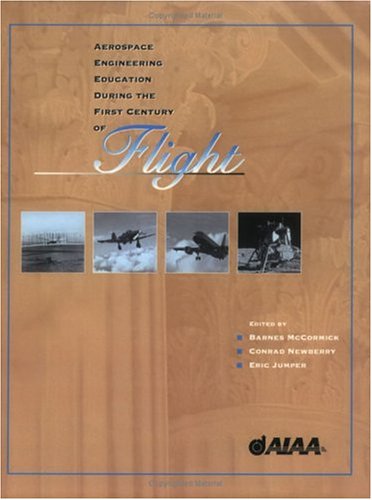Aerospace Engineering Education During the First Century of Flight (Library of Flight)
B. McCormick; C. Newberry; E. Jumper
About the Book
Description:
Acceptable/Fair condition. Book is worn, but the pages are complete, and the text is legible. Has wear to binding and pages, may be ex-library. Seller Inventory # 353-1563477106-acp
About this title:
Synopsis: On 17 December 1903 at Kitty Hawk, NC, the Wright brothers succeeded in achieving controlled flight in a heavier-than-air machine. This feat was accomplished by them only after meticulous experiments and a study of the work of others before them like Sir George Cayley, Otto Lilienthal, and Samuel Langley. The first evidence of the academic community becoming interested in human flight is found in 1883 when Professor J. J. Montgomery of Santa Clara College conducted a series of glider tests. Seven years later, in 1890, Octave Chanute presented a number of lectures to students of Sibley College, Cornell University entitled "Aerial Navigation." This book is a collection of papers solicited from U. S. universities or institutions with a history of programs in Aerospace/Aeronautical engineering. There are 69 institutions covered in the 71 chapters. This collection of papers represents an authoritative story of the development of educational programs in the nation that were devoted to human flight. Most of these programs are still in existence but there are a few papers covering the history of programs that are no longer in operation. A comprehensive treatment of the early beginnings of aerospace education are documented in Part I as well as the rapid expansion of educational programs relating to aeronautical engineering that took place in the 1940s. Part II is devoted to the four schools that were pioneers in establishing formal programs. Part III describes the activities of the Guggenheim Foundation that spurred much of the development of programs in aeronautical engineering. Part IV covers the 48 colleges and universities that were formally established in the mid-1930s to the present. The military institutions are grouped together in the Part V; and Part VI presents the histories of those programs that evolved from proprietary institutions.
Bibliographic Details
Title: Aerospace Engineering Education During the ...
Publisher: AIAA
Publication Date: 2004
Binding: Soft cover
Condition: Fair
